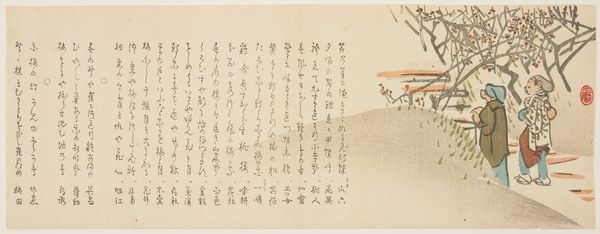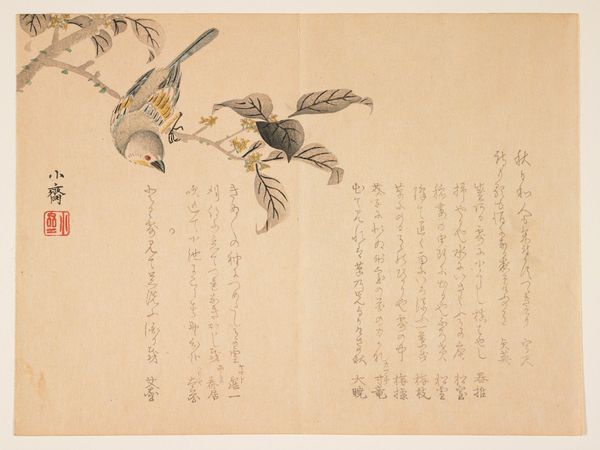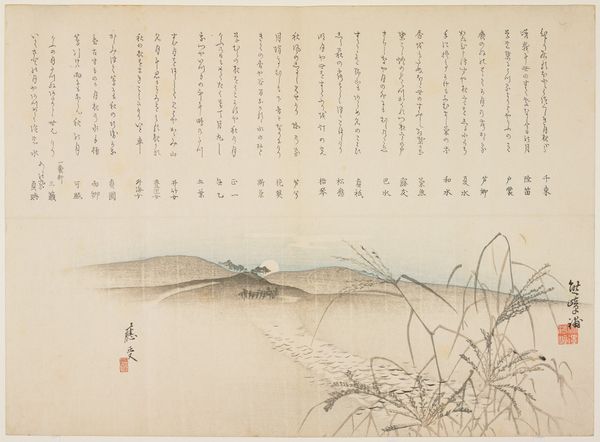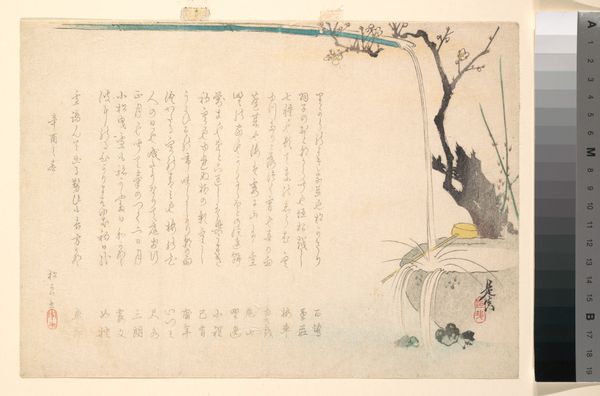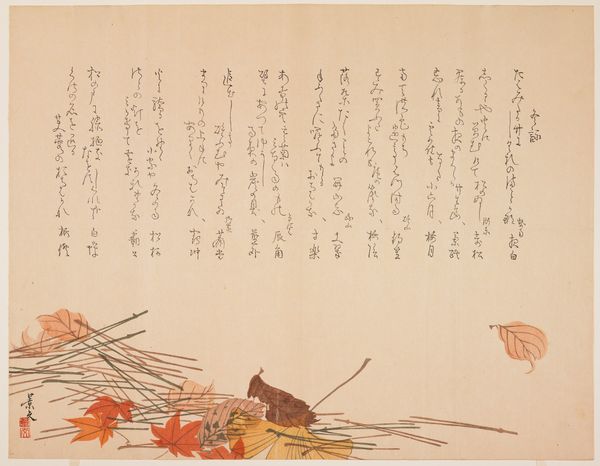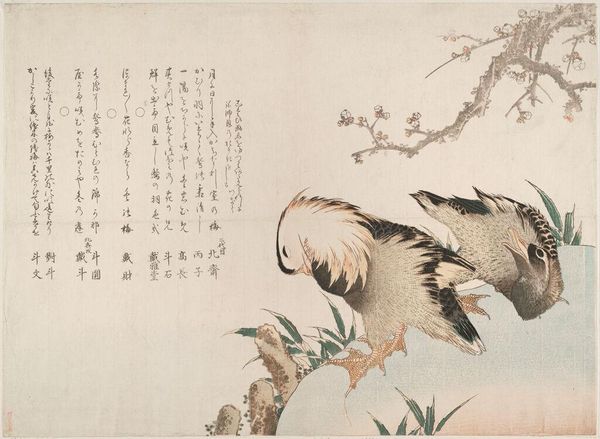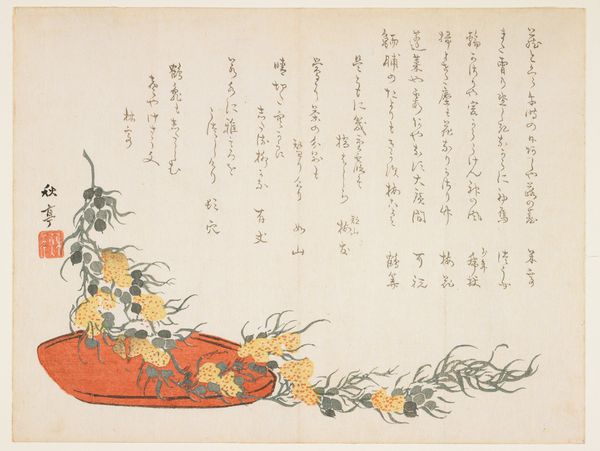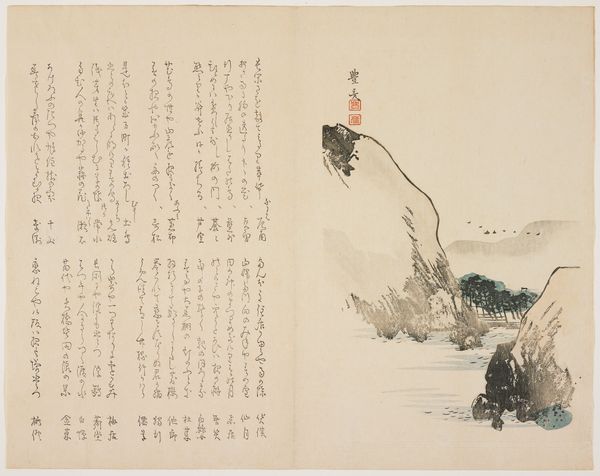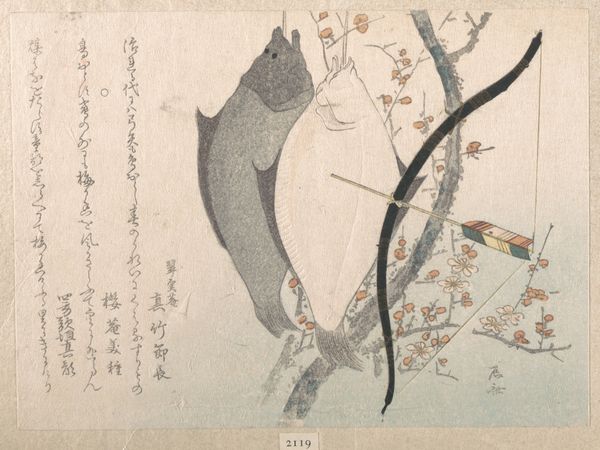
painting, print, paper, ink
#
painting
# print
#
asian-art
#
landscape
#
ukiyo-e
#
japan
#
paper
#
ink
#
botanical art
#
watercolor
Dimensions: 15 x 18 3/4 in. (38.1 x 47.6 cm) (image, sheet)
Copyright: Public Domain
Editor: This is “Sparrows amid Ripe Rice” by Nakajima Raisho, created sometime between 1820 and 1859. It's a painting, a print, actually, made with ink and watercolor on paper. There's such a stillness to the scene despite the sparrows flitting about. I’m struck by how the inscription shares the same space as the image. How do you interpret this work, especially given its materials? Curator: Focusing on the materials, we see ink and watercolor, readily available and relatively inexpensive. This speaks to a potential market beyond the elite. Paper, while ubiquitous, varies greatly in quality and its preparation, affecting the absorption of the ink and watercolor. Consider the labor involved in preparing the paper, in grinding the ink, in cultivating the rice depicted. It shifts our perspective. Editor: So you're saying the commonality of the materials maybe points to a broader consumer base for art like this? Curator: Precisely! The printmaking process itself allowed for wider distribution, democratizing art ownership to some degree. But also, what of the labor represented *within* the image? Sparrows feeding on rice imply cultivation. Whose hands harvested this crop? Were they also consumers of this art? Editor: That connection hadn't occurred to me. Thinking about who made the paper and grew the rice… it adds a layer of social complexity that just looking at the composition misses. Curator: Exactly. By considering the production and the socioeconomic context surrounding this ukiyo-e print, we begin to question traditional notions of artistic value tied solely to aesthetic skill or authorial intent. What’s more valuable, the artwork or the rice? Both provide sustenance in their own way. Editor: I see that reframing of value changes how we perceive art’s role and impact! Thanks! Curator: My pleasure. Thinking about art through the lens of production really expands our understanding.
Comments
No comments
Be the first to comment and join the conversation on the ultimate creative platform.

